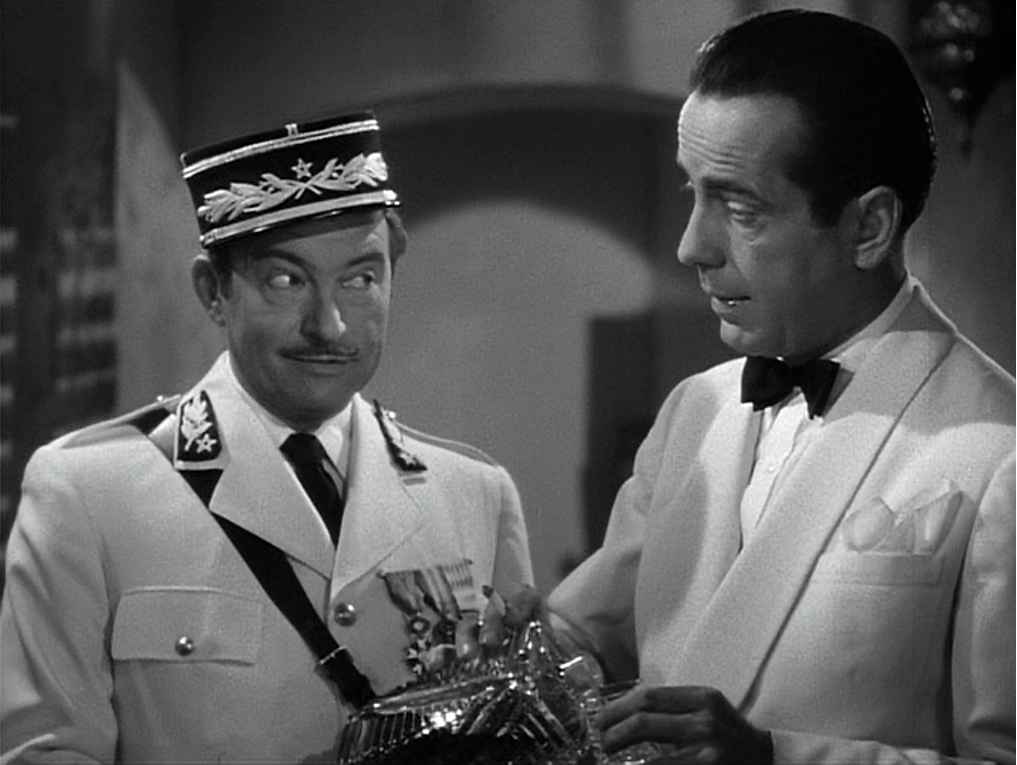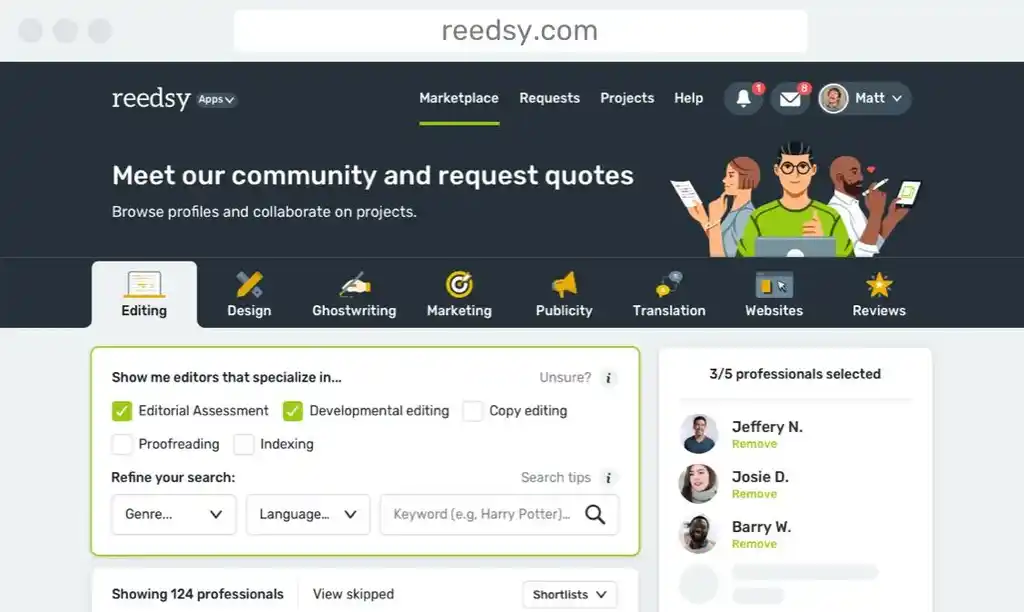Guides • Perfecting your Craft
Last updated on Nov 03, 2022
3 Types of Irony: Tell Them Apart With Confidence (+ Examples)
Irony is when the opposite of what is expected happens. In writing, there are three types of irony — verbal, situational, and dramatic.
- Verbal irony is when a person says one thing but means the opposite;
- Situational irony is when the opposite of what is expected happens; and
- Dramatic irony is when the audience knows something that characters do not.
The term “irony” comes from the Greek word eironeia, meaning "feigned ignorance," and storytellers of all stripes like to use the different forms of irony as a rhetorical or literary device to create suspense, humor, or as the central conceit in a plot.
To help you make heads or tails of this technique, this article will dig into the three common types of irony.
1. Verbal irony
Verbal irony is where the intended meaning of a statement is the opposite of what is actually said. People and literary characters alike use it to express amusement, emphasize a point, or to voice frustration or anger. In literature, verbal irony can create suspense, tension, or a comic effect.
Verbal irony is actually the type of irony most used in everyday conversation, and can take the form of sarcasm — which is almost always used to denigrate someone or something. Regardless, the two are not the same thing, though many people conflate the concepts.
To illustrate, here are a few common phrases that perfectly exemplify how verbal irony works — many of them similes comparing two entirely unlike things:
- "Clear as mud."
- "Friendly as a rattlesnake."
- "About as much fun as a root canal."
Understating and overstating
Broadly speaking, verbal irony works by either understating or overstating the gravity of the situation.
An ironic understatement creates contrast by undermining the impact of something, though the thing itself will be rather substantial or severe. For example, in The Catcher in the Rye, Holden Caulfield casually says, "I have to have this operation. It isn't very serious. I have this tiny little tumor on the brain." Of course, Holden is lying here, which is why he can be so cavalier — and the nonchalant way he downplays something as serious as a brain tumor is ironic.
On the other hand, an ironic overstatement makes something minor sound like a much bigger deal to emphasize a quality it lacks. For example, say you win $5 in a lottery where the grand prize is $100 million. A friend asks you if you won anything, and you say, "Yeah, total jackpot" — that's an ironic overstatement.
💡 Note: Don’t confuse ironic overstatements with hyperbole, the rhetorical device of exaggeration. If a character says "I'm so tired, I could sleep for a million years,” and they are genuinely tired, that isn’t ironic — just exaggerated.
Highlighting a fallacy
Verbal irony is often used for satirical purposes, exaggerating or underplaying descriptions to reveal a deeper truth. Viewed through a lens of overstatement or understatement, the reader can see how flawed the original concept might be.
Verbal irony can be found in the very first lines of Romeo and Juliet (a play riddled with irony).
Two households, both alike in dignity,
In fair Verona, where we lay our scene,
From ancient grudge break to new mutiny,
Where civil blood makes civil hands unclean.
Though the first line may sound respectful, we can see by the end of this verse that Shakespeare doesn’t actually mean to say that both households are alike in their great dignity. Instead, these lines imply the total opposite — that both households are equally undignified. This irony also serves another purpose: notifying first-time readers that not all that glitters is gold. While both families might technically be considered nobility, their shared inability to act nobly toward one another ultimately leads to a bitter end for our tragic heroes.
🖊️
Which famous author do you write like?
Find out which literary luminary is your stylistic soulmate. Takes one minute!
Providing insight into characters

Dialogue is an incredible tool for revealing what a character is like as how they choose to say something can speak volumes about who they are. Very often, people who use verbal irony tend to be highly self-aware.
For example, in Casablanca, the corrupt (yet charming) police captain Louis Renault follows instructions from German officials to order a raid on Rick's nightclub under the pretext of closing an illegal gambling den. "I'm shocked — shocked! — to find that gambling is going on in here!" Renault exclaims while thanking Rick’s croupier for bringing him his winnings. This knowing overstatement of 'shocked' reveals a lot about his cheerfully cynical worldview.
Free course: Character Development
Create fascinating characters that your readers will love... or love to hate! Get started now.
Creating a comic effect
Of course, verbal irony can also be used for a simple comic result. Whether it's to highlight a witty character, lighten tension during a dark or difficult scene, or just to make people laugh, verbal irony can provide a much-needed moment of humorous relief. As you might expect, verbal irony is a common joke component.
For example, in Notting Hill, when love interests Anna and Will first meet at his bookshop, he confronts a man who’s trying to steal a book, and very politely threatens to call the police. When he returns to the till to help Anna, she hands over the book she’d like to buy and says “I was gonna steal one, but now I’ve changed my mind.” Obviously, the statement isn’t true — she’s using verbal irony to make light of the situation, diffusing awkwardness and showing her friendly inclination.
2. Situational irony
In literature, situational irony is a literary or plot device occurring when there is a discrepancy between what is expected to happen and what actually happens. You can use it to create suspense, humor, and surprise in your writing.

You can think of it as “the irony of events” to distinguish from the other types of irony, but it is not the same as coincidence or bad luck (apologies to Alanis Morrisette). If you buy a new car and then accidentally drive it into a tree, that is coincidental and unlucky, but not ironic. However, if a professional stunt driver crashes into a tree on their way home from receiving a "best driver" award, that is situationally ironic.
Within the context of a story, why might a writer use situational irony?
Creating a good ol’ fashioned twist
Authors can draw strong reactions from their readers by presenting them with carefully executed twists and turns. A plot twist is all the more delicious when it's the polar opposite of what you'd typically expect. Storylines based on or containing situational irony inherently possess an element of surprise, so they're common in the comedy, thriller, crime, and mystery genres.
In Oscar Wilde’s The Importance of Being Earnest, for example, Jack proposes to Gwendolen under his fake name of Ernest, hoping to share the truth about his name once he’s been accepted. His plan is quickly thwarted when she accepts him because of his name, telling him that her “ideal has always been to love some one of the name of Ernest.” When he asks her what he thinks of “Jack” as a name, she declares that “The only really safe name is Ernest” — so his plan to reveal the truth is suddenly turned on its head, and he resolves to get christened as soon as possible.
Emphasizing a theme or moral lesson
Steering readers to an unexpected destination in a story can also emphasize a theme or moral lesson — often reminding readers that an expected outcome is not always guaranteed. And because situational irony can urge readers to think twice about their own assumptions, authors often deploy it in fables or morality tales.
In Aesop's 'The Tortoise and the Hare,' for example, the unexpected outcome teaches us that slow and steady wins the race. Or perhaps the real moral is that you shouldn't be complacent and take naps during races.
Situational irony creates a contrast between appearances and underlying truths. When done properly, this can significantly alter a reader's interaction with, expectations of, and insight into a story. But irony must be used with care: without the help of intonation and body language, it requires people to read between the lines to understand its intentions; a reader who doesn’t see the irony will take these words at face value.
3. Dramatic irony
Dramatic irony occurs when the reader or viewer knows something that the characters in the story do not. This can create a sense of unease or anticipation as the audience waits to see how the characters will react to the situation they are in.
So, to what effect can dramatic irony be used in a story?
Building fear and suspense
When readers or viewers know more than the characters do, they’re often left on pins and needles, waiting for the other shoe to drop or for an inevitable plot point to appear. Will the character discover the secret we already know? What will happen when they find out the truth? What if they find out the truth too late? Subconsciously, all of these questions run through their minds as the story unfolds, contributing to page-turning suspense.

The Hobbit contains a perfect example of dramatic irony — when Bilbo happens upon the ring while lost on a mountain, he puts it in his pocket and soon afterward encounters Gollum.
At this point, readers understand the significance of the ring and its importance to Gollum. However, Gollum does not yet realize he has lost the ring, and Bilbo doesn’t yet know who the ring belongs to. For this reason, the scene where Bilbo and Gollum engage in a game of riddles becomes more stressful for the audience who understands what’s at stake.
📚 For some truly impressive suspense-building, check out this list of the 50 best suspense books of all time.
Eliciting sympathy for a character
If a character is happy but we know that tragedy lies ahead, we can’t help but sympathize with them. If the reader or audience is already "rooting for" the characters, they will hold on to the hope that things will turn out okay for them. And whatever the end result is — pain or relief — the reader is likely to feel it twofold.

The audience knew all along! (image: Touchstone Pictures)
In the modern-day Shakespeare adaptation Ten Things I Hate About You, for example, bad-boy transfer student Patrick is paid by his classmate to woo the cold and aloof Kat. The audience knows that Kat will eventually discover the truth. The deception will wound her, and Patrick will (justifiably) lose her trust. This dramatic irony gives the scenes where they fall in love a bittersweet edge, making us sympathize with both characters.
In fact, many romance tropes rely on dramatic irony, like the hate-to-love trope — just on account of the characters existing in a romance novel, readers know they're going to end up together. This results in that “slow burn” anticipation where readers are dying to see the characters confess their feelings, but have to live with their impatience as the romance slowly runs its course.
Setting up comical misunderstandings
A lot of comedy comes out of misunderstandings — where a character believes something that the audience knows not to be true, or doesn’t yet know something important. The dramatic irony turns into comedic tension as the character obliviously digs themselves (or other characters) into a deeper hole.
To give you an example of how this works: in a season one episode of Friends, Joey tried to win back his ex-girlfriend Angela by arranging a double date. Hebrings Monica but tells her that Angela’s new boyfriend, Bob, is actually her brother — making it seem as though Bob is Monica’s date. This misunderstanding turns to hilarious confusion as Monica is creeped out by how 'close' Bob and Angela seem to be.
Want more examples and in-depth explanation of any of these types of irony? We’ve spent some time breaking them down even further in the next posts in this guide — starting with verbal irony.




3 responses
Katharine Trauger says:
08/08/2017 – 05:39
I once received a birthday card telling me that irony is the opposite of wrinkly. But I do have a question: I believe, as you related to Hitchcock and I think about his works, that he used irony extensively, even more than one instance in a piece. It's a lot to remember and I've certainly not examined his works to verify that. However, I wonder if, although his works were beyond successful and loved by many, just how much irony is acceptable in today's writing. I agree it is a great device, but can it be overdone? Also, I am writing a piece which has what I believe an ironic ending. Is that a bad place to put a huge departure from the expected? I think O'Henry did that a lot, like when the man sells his watch to buy combs for his wife, and she sells her hair to buy a chain for his watch... But today, how much is too much and will readers come back for more?
↪️ Jim Morrison replied:
20/06/2018 – 21:42
While irony can be overused, it is not a bad thing to use irony - even to end a book. "Story" by Robert McKee discusses irony as an ending and explains how to use it and when to use it. As to your question about how much irony is accepted in today's society, I would say that it is more acceptable than before. With today's writing - particularly in theater - irony is a heavily used element. Thor: Ragnarok, for example, is dripping with ironic situations. Satire, the personal wheelhouse of Vonnegut and Heller, is not only a highbrow version of sarcasm, it is also heavy on the irony. So I say, personally, be as ironic as you want, just, as mentioned in the blog, be careful you don't overuse it to the point that the use of irony becomes ironic (i.e. you lose the audience). Cheers and happy writing.
Naughty Autie says:
30/05/2019 – 15:37
There is a blog which does not allow comments, yet it's called 'The Conversation'. Funny, I always thought that a conversation always took place between multiple people.